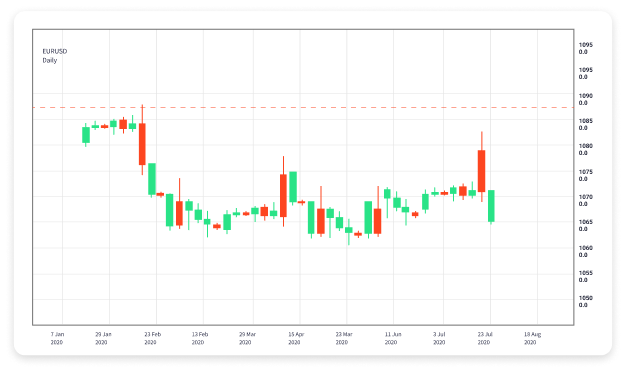
Forex trading operates on a 24-hour basis due to the different global time zones in which currency markets are active. Understanding these trading sessions is crucial for traders aiming to maximize their profits and minimize risks. The major trading sessions include the Sydney, Tokyo, London, and New York sessions, each offering unique opportunities. In this article, we’ll delve deeper into each session, their time zones, characteristics, and the best strategies to employ during these times. For more insights, visit forex trading sessions time zones trading-vietnam.com.
1. Importance of Forex Trading Sessions
Forex markets are decentralized and open for trading 24 hours a day, five days a week. This structure is facilitated by major financial centers across the globe, which leads to four primary trading sessions. Each session overlaps with others at certain times, creating opportunities for traders due to increased market activity and volatility. Recognizing these trading sessions allows traders to schedule their trading activities around the hours when the market is most active, thereby enhancing their chances of executing successful trades.
2. Major Forex Trading Sessions
2.1. Sydney Session
The Sydney session opens first at 10:00 PM GMT and closes at 7:00 AM GMT. This session marks the beginning of the Forex trading day. While it tends to have lower volume compared to the London or New York sessions, it can still be favorable for trading major currency pairs such as AUD/USD and NZD/USD. This session is also characterized by the overlap with the Tokyo session, where significant movement can occur, especially in Asian currency pairs.
2.2. Tokyo Session
The Tokyo session runs from 12:00 AM GMT to 9:00 AM GMT. As the market becomes more active, this is when Asian currencies begin to see movement. The volatility during this session can provide numerous trading opportunities, particularly for currency pairs that include the Japanese Yen, such as USD/JPY and EUR/JPY. Additionally, market participants often react to news indications from the Asia-Pacific region during this time.
2.3. London Session
Opening at 8:00 AM GMT and closing at 5:00 PM GMT, the London session is the most significant trading session in the Forex market. It accounts for more than 30% of the total Forex trading volume and is where major banks and financial institutions are heavily involved. Traders should be aware that high volatility occurs during this session, especially when it overlaps with the New York session (from 1:00 PM GMT to 5:00 PM GMT). Currency pairs such as GBP/USD, EUR/USD, and USD/CHF are particularly active during this session.
2.4. New York Session
The New York session runs from 1:00 PM GMT to 10:00 PM GMT. As one of the largest financial centers in the world, the New York market adds significant liquidity to the Forex market. This session sees increased trading volume for pairs such as EUR/USD, USD/JPY, and GBP/USD. Economic news releases from the US, especially during this session, can lead to sharp price movements, making it important for traders to be aware of scheduled announcements.
3. Overlaps Between Trading Sessions
The overlapping periods between trading sessions are particularly crucial for Forex traders. The most notable overlaps include:
- Sydney and Tokyo: 12:00 AM GMT to 3:00 AM GMT – This period can see increased volatility in currencies such as AUD/USD and NZD/JPY.
- London and New York: 1:00 PM GMT to 5:00 PM GMT – This is the most active period in Forex, where substantial volatility occurs, allowing traders to capitalize on price movements across major currency pairs.

4. Strategies for Each Trading Session
Understanding the characteristics of each trading session aids traders in devising effective trading strategies. Here are a few approaches tailored for each session:
4.1. Sydney Session Strategies
During the Sydney session, traders might consider strategies such as range trading and breakout trading. Since the market can be quieter in this session, traders can look for low volatility setups and identify key levels of support and resistance.
4.2. Tokyo Session Strategies
In the Tokyo session, traders can benefit from using momentum trading strategies, especially as the market reacts to news from Japan and other Asian countries. Currency pairs involving yen typically see fresh developments during this time, providing good trading opportunities.
4.3. London Session Strategies
The London session is suited for breakout trading. The increased liquidity creates opportunities for quick profits as key levels are either broken or respected. Traders should also be aware of forex news releases that can lead to significant market movements.
4.4. New York Session Strategies
During the New York session, traders can focus on news trading and reversal strategies. The market often reacts sharply to economic data released within this timeframe, leading to increased volatility that can be advantageous for traders who understand market dynamics.
5. Conclusion
Understanding forex trading sessions and their respective time zones enables traders to navigate the market more effectively. Each of the four primary sessions offers distinct characteristics, opportunities, and risks. By aligning trading strategies with the correct time frames and paying attention to overlaps, traders can enhance their trading performance. As the Forex market is fluid and influenced by a multitude of factors, continual education and adaptation are key to success in this dynamic environment.
In summary, grasping the intricacies of Forex trading sessions is vital for developing a robust trading strategy. Whether you’re a seasoned trader or a newcomer, mastering these concepts will significantly improve your approach to the Forex market.
